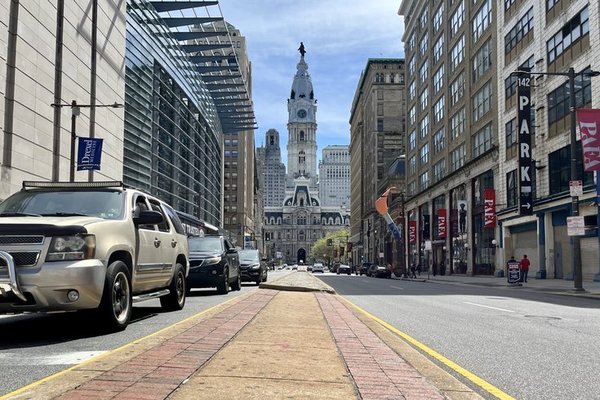Four years after automated speed cameras were installed along Roosevelt Boulevard, a proposal to add the technology to Broad Street has the support of Mayor Cherelle Parker's administration and PennDOT, city officials said Friday.
Earlier this month, City Councilmember Mark Squilla introduced a bill that would allow cameras to be placed along State Route 611, which runs nearly the entire length of Broad Street and includes a small portion of Old York Road in North Philly.
- MORE NEWS
- Bensalem's red-light cameras issued a 'shocking' number of warnings during their grace period, police say
- Philadelphia poised to make eviction diversion program permanent
- Philly-area Coke bottler forgoes plastic bottle carriers in favor of recyclable cardboard
A state law passed in December enables Philadelphia to expand its use of speed cameras on up to five additional corridors, each requiring the passage of a separate city ordinance. Such projects would be carried out in conjunction with the Philadelphia Parking Authority and PennDOT, which controls many of the city's key roadways.
Much like on Roosevelt Boulevard, speed cameras on Broad Street would be used to detect vehicles that are traveling 11 mph or more above the speed limit. For violators in Northeast Philly, PPA sends fines of up to $150 in the mail using information tied to the vehicle's license plate. When the cameras on Roosevelt Boulevard debuted, there was a 60-day grace period during which violators were sent warning notices.
"Automated Speed Enforcement has been extraordinarily successful in saving the lives of pedestrians and motorists on Roosevelt Boulevard,” Mike Carroll, deputy managing director of the Office of Transportation and Infrastructure Systems, said Friday. “We're looking to bring that same lifesaving technology to Broad Street, which has the city's highest level of traffic deaths and serious injuries."
In a report, city officials said the speed cameras on Roosevelt Boulevard have reduced speeding at their locations by 95.3% and cut down on crashes resulting in death or serious injury by 21%. Crashes involving pedestrians have fallen by half.
In April, Philadelphia police conducted a 30-day enforcement campaign to address rampant speeding and other traffic violations along an eight-mile stretch of Broad Street from City Hall to the Montgomery County line. At the time, police said they were supportive of adding speed cameras to Broad Street.
Since 2018, the city's Vision Zero analysis has found that speed-related crashes have increased from 15% to 22% of all severe collisions. They led to 296 deaths and 501 suspected serious injuries from 2018 to 2022.
The report identified four additional corridors, shown in the graphic below, where the city hopes to install speed cameras in the years to come. They are State Route 13 (Baltimore Avenue/Hunting Park Avenue/Roosevelt Boulevard and Frankford Avenue); State Route 2016 (Allegheny Avenue); State Route 3 (Chestnut Street and Walnut Street); and State Route 291 (Penrose Avenue/Bartram Avenue/Moyamensing Avenue). The corridors were chosen based on an analysis of crash data on both state and local routes in Philadelphia.
One of the goals of the program is to reduce the number of crashes along primary commuter routes that run through low-income neighborhoods. These neighborhoods have the city's highest rates of pedestrian and cyclist fatalities because there are lower rates of car ownership and inadequate infrastructure to help prevent crashes.
Over the last year, the city and PennDOT have worked to address speeding on a number of other city roadways there have been frequent crashes. Speed limits were lowered on six major corridors in Philadelphia, including Kelly Drive and Cottman Avenue, and speed bumps have been installed along a number of high-traffic areas.
If the Broad Street camera bill is passed and signed by Parker, the project will be required to undergo a PennDOT analysis and an engineering and traffic investigation of the posted speed limit. At least one opportunity for public comment is required before the project can move forward.

